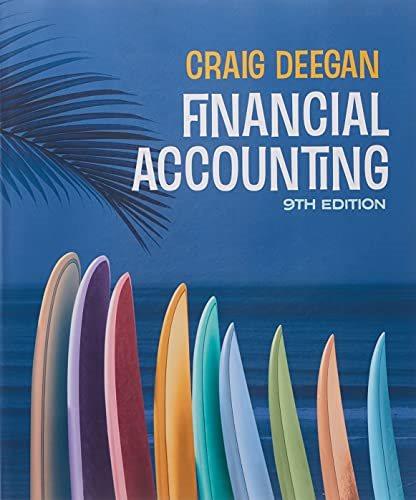Determine for each of the following arrangements the manner in which the relevant lease should be classified
Question:
Determine for each of the following arrangements the manner in which the relevant lease should be classified by the lessor pursuant to IFRS 16/AASB 16. Give reasons for your answers.
1. Company A enters into a non-cancellable lease with a five-year term for an item of plant, which has an expected useful life of eight years. The lease is renewable for a further two-year period at commercial rates prevailing at the time of renewal. The present value of the future lease payments is equal to 80 percent of the fair value of the leased property at the inception of the lease. The remaining 20 per cent of the fair value is represented by the guaranteed residual value. The residual value has been guaranteed by an independent third party, an insurance company, which is unrelated to either the lessor or the lessee.
2. Company B enters into a non-cancellable lease with a seven year term for an item of plant, which has an expected useful life of 10 years. The present value of future lease payments is equal to 75 percent of the fair value of the asset at the date of inception of the lease. The residual value accounts for the remaining 25 per cent. So confident is the lessor that the plant will retain its value that it is guaranteeing 50 per cent of the residual value, with the lessee being responsible for guaranteeing the remaining 50 percent of the residual value.
3. Company C enters into a non-cancellable lease with a five-year term for a large commercial vehicle, which has an expected useful life of eight years. The lease is renewable for a further two years at commercial rates prevailing at the time of renewal. The present value of lease payments is equal to 65 percent of the fair value of the asset at the date of inception of the lease. The residual value is not guaranteed by the lessee and the vehicle will revert to the lessor. In a separate agreement, the lessee has written a put option, which entitles the lessor to put the leased property to the lessee in five years’ time on payment of an amount equal to the residual value of the leased asset.
4. Company D enters into a non-cancellable lease for plant with a term of eight years. The plant has a useful economic life of 12 years. Company D has an option to renew the lease with the same rental for a further four years, even though market rentals are expected to increase with inflation over the next decade. The present value of the lease payments is 70 per cent of the fair value of the plant.
Step by Step Answer:






